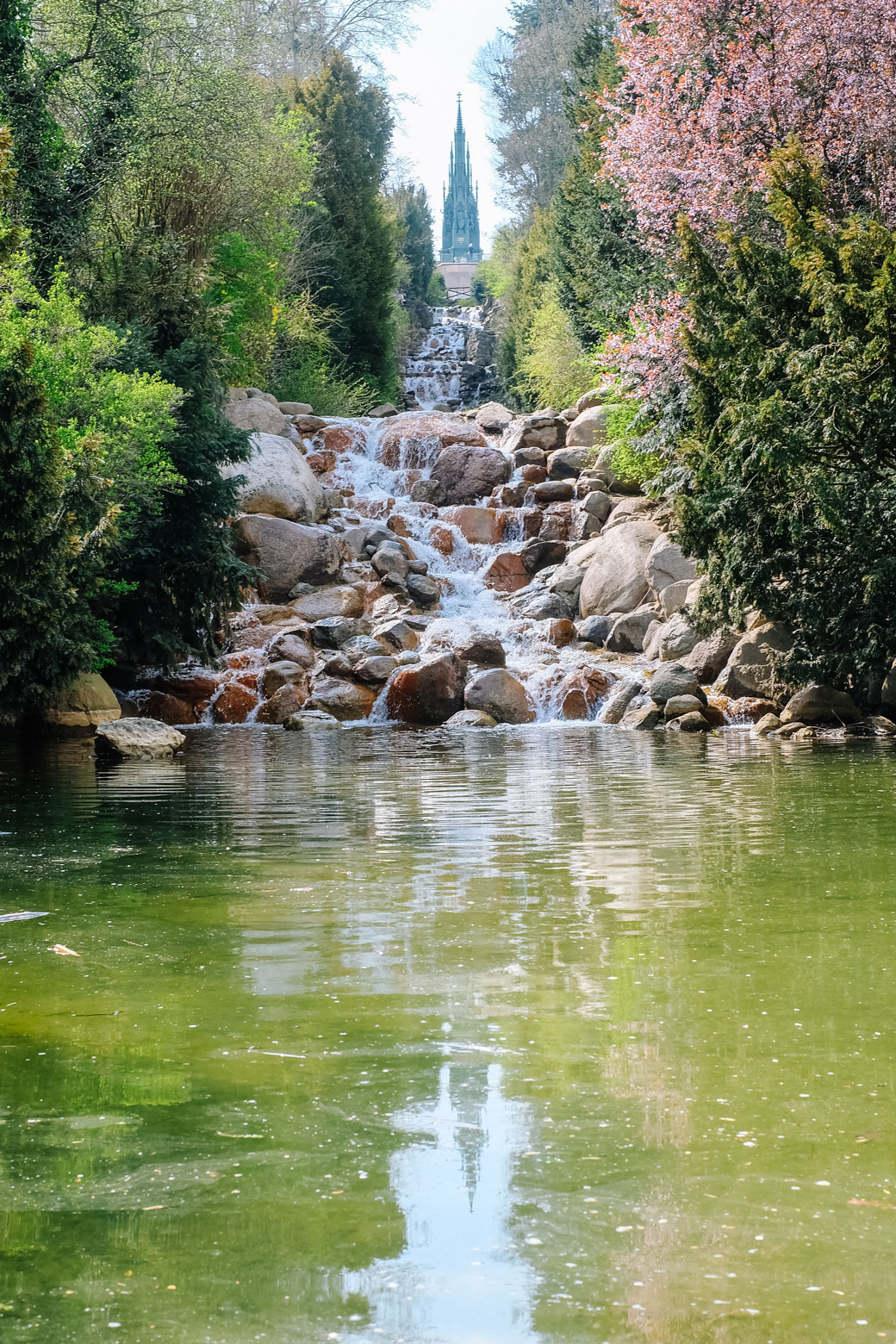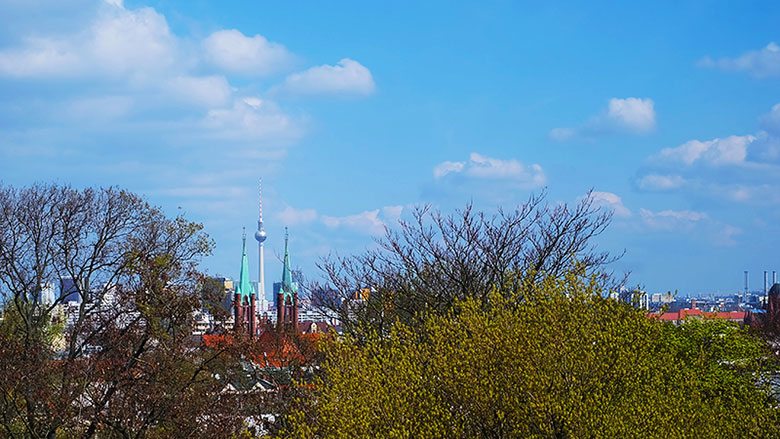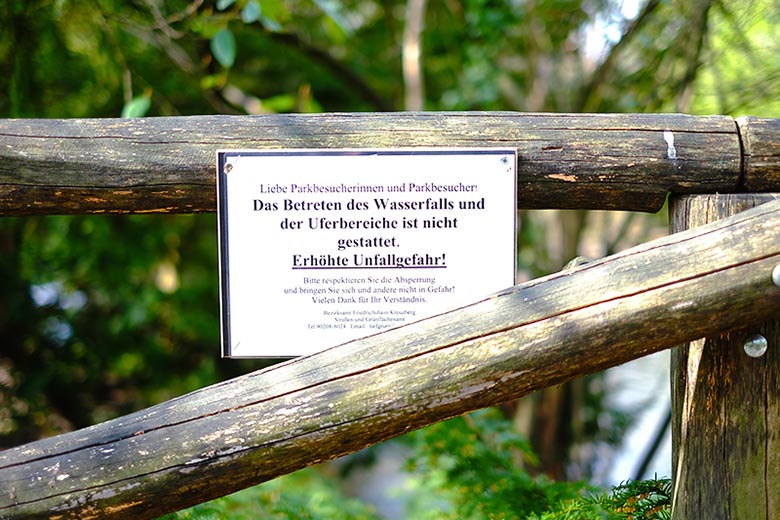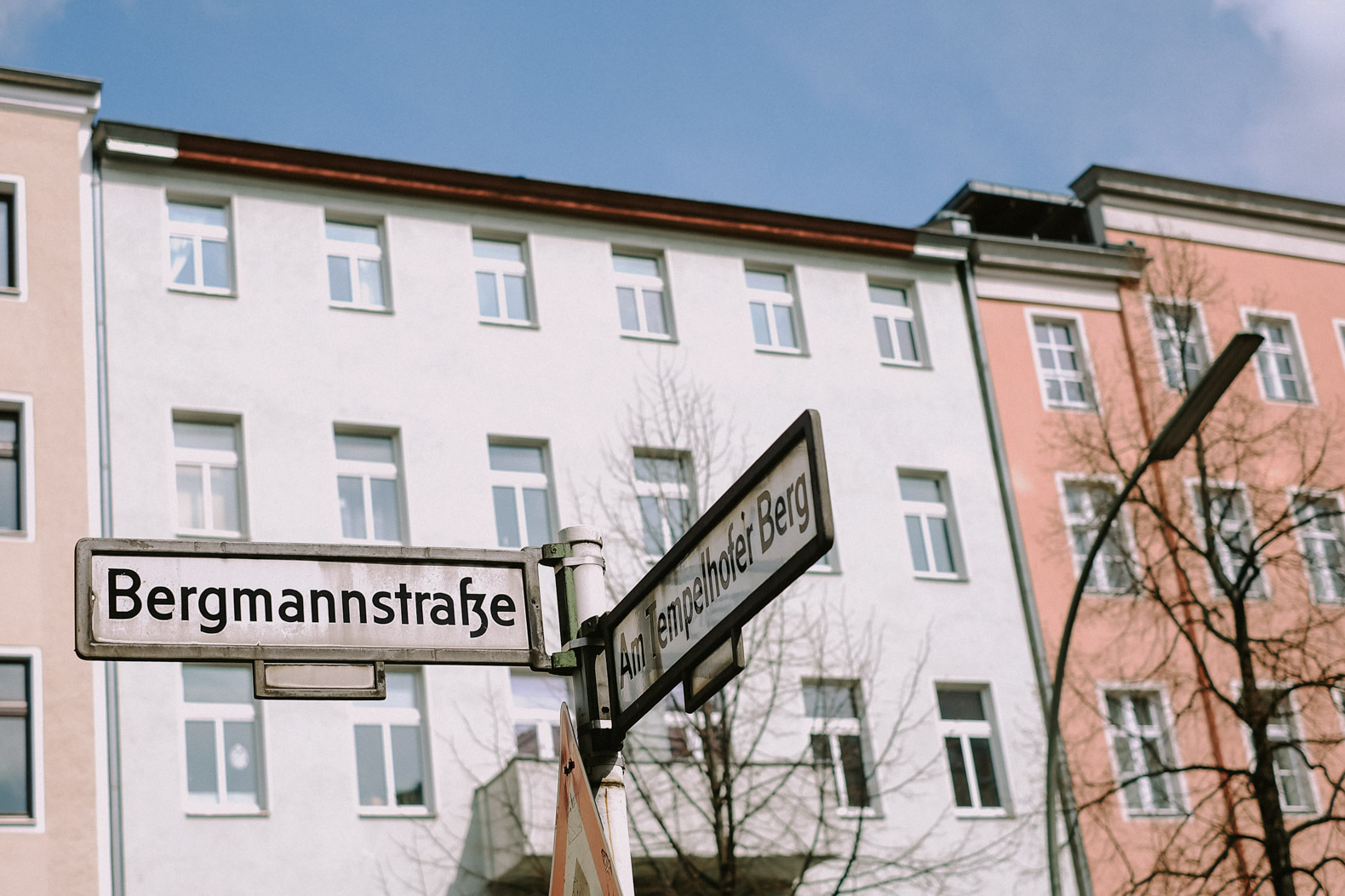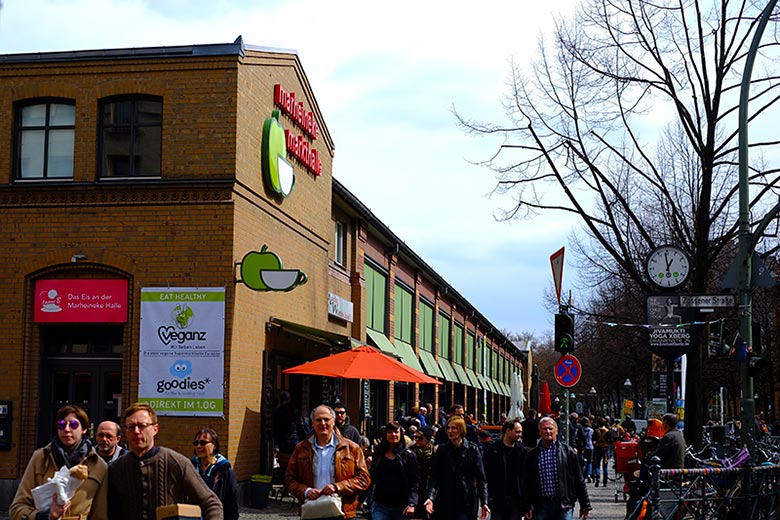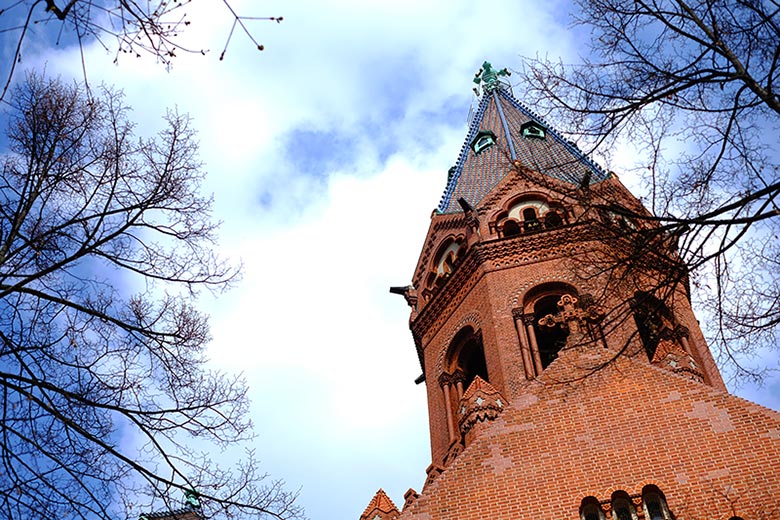I’ve mentioned it before: I freak out about Spring.
One reason for this is that Berlin is not a very attractive city when you strip her down to her underwear. Without a snowy coat, Berlin in winter looks (and is) extra grey and extra dirty. I could count on one hand, with fingers to spare, how many good snows we had this year. The rest of the time, between November and March, it was grey grey grey.
When all these lovely trees start putting on their leaves and getting ready to host parties of birds, I know that the whole city will soon start its very own Spring Awakening!
Often chastised for their love of hiking shoes for all occassions, the Germans are a people that belong outdoors. As soon as it’s bearable, you’ll seem them out in droves, defiantly wearing shorts and shivering through an ice cream cone. And I don’t blame them. I did my own version of this on Saturday by brazenly wearing ballet flats without socks. My boyfriend and I took advantage of the sunny day to walk a couple kilometers around our beloved neighborhood, the Bergmannkiez.
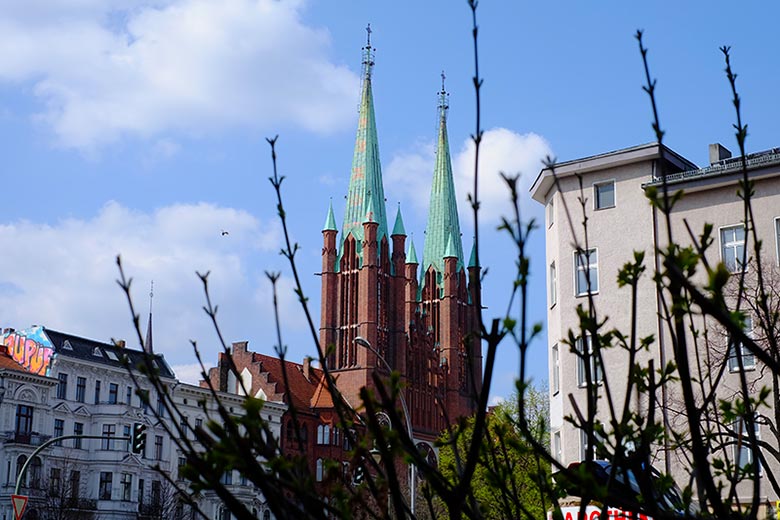
From the intersection of Gneisenaustraße and Mehringdamm, our first impression was of the Katholische Pfarrei Sankt Bonifatius. It’s a funny sight surrounded by soviet-style housing and grafitti, but this beautiful church is just one of several in the immediate area. Remember how it looks! We’ll be searching for it later 😏
(View the complete route on Google Maps)


We turned south along Großbeerenstraße.
I always think this street is funny, because its name literally means “Big Berries Street”.
Anyways, Großbeerenstraße hosts some lovely houses with sunny street-facing balconies, local cafés and bakeries, as well as supermarkets and bars. One such bar, the Galander Bar, is one of Berlins’ top cocktail bars (pictured to the right).
Continuing south for just a short way, we stumbled upon the main event! Viktoriapark's gorgeous tree-framed waterfall, crowned with the Nationaldenkmal für die Befreiungskriege (National Monument for the Liberation Wars). This monument was dedicated in 1821 by the Prussian king, before Germany was unified the first time, to honor Prussian soldiers who’d dedicated their lives in the last coalitions of the wars against Napoleon.
Can you even believe that something so beautiful is right in the middle of the city?
So, which came first, the monument or the park?
In the late 1800’s, the maximum height of the buildings surrounding the monument was decreated in order to increase its visibility. On this occsion, it was decided to design a park around the monument. Viktoriapark was named after Princess Victoria of Great Britain and Ireland (probably married to a Prussian somehow). The park itself and the waterfall are artificial, having been designed by Hermann Mächtig (who, at the time, was Berlin’s “city garden director” — what a title!)
Artificial or not, few things are more magical than the mini-hike to the top of the hill for one of the best views of Berlin you can come by.


Just look at that blue sky! Such a glorious sight in Berlin (and as I type this, we’re getting a heavy Spring downpour — figures).
From here it’s possible to see numerous Berlin landmarks, like the Fernsehturm (the TV Tower), Gendarmenmarkt, and even smaller but recognizable churches and cathedrals. Do you recognize the one framing the TV tower? It’s the Katholische Pfarrei Sankt Bonifatius we saw at the beginning of the walk! Looks even more impressive from above, eh?
In case you’re wondering, the hill that the monument sits on is the Kreuzberg, “Cross Mountain” in English. It’s the highest natural point in Berlin, as the highest of the Tempelhofer Berge, the Templehof Mountains.
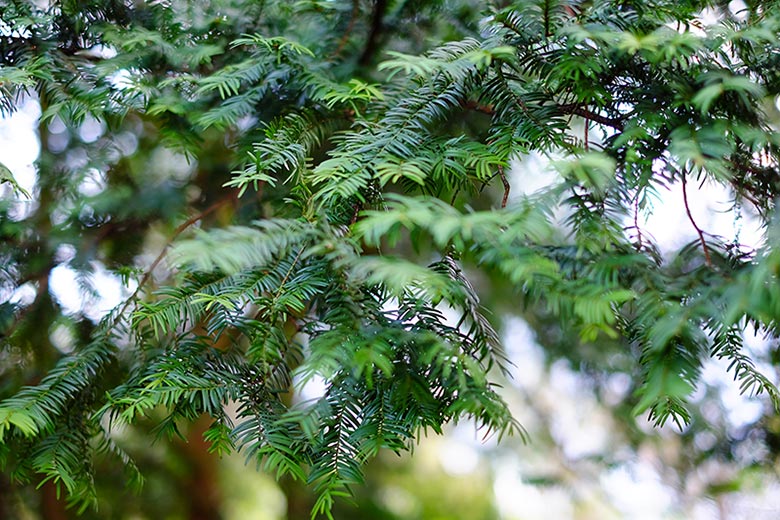
If you’re here in the warmer months, be sure to check out the Golgatha Biergarten, a beergarden located in the southernmost part of the park. From the upper terrace, you can admire the park’s lovely foliage. They even accept card payments (a rarity in Germany).


After the climb down, we’re back where we started at the intersection of Großbeerenstraße and Kreuzbergerstraße. Now begins the journey back into the Bergmannkiez.
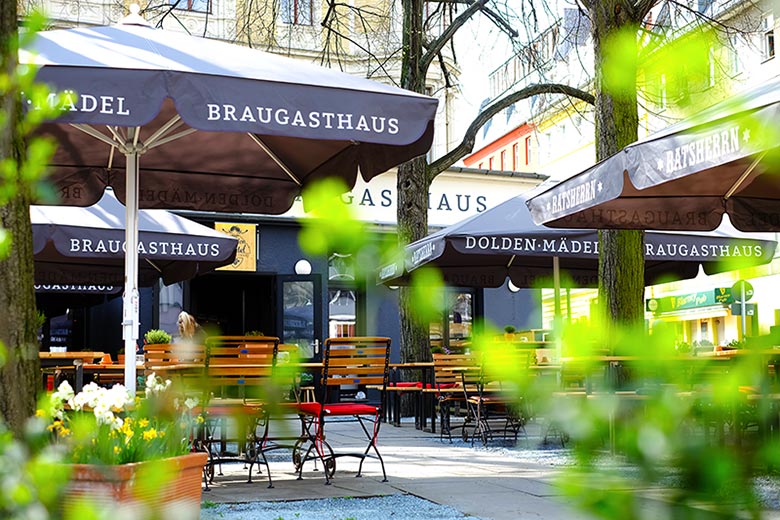
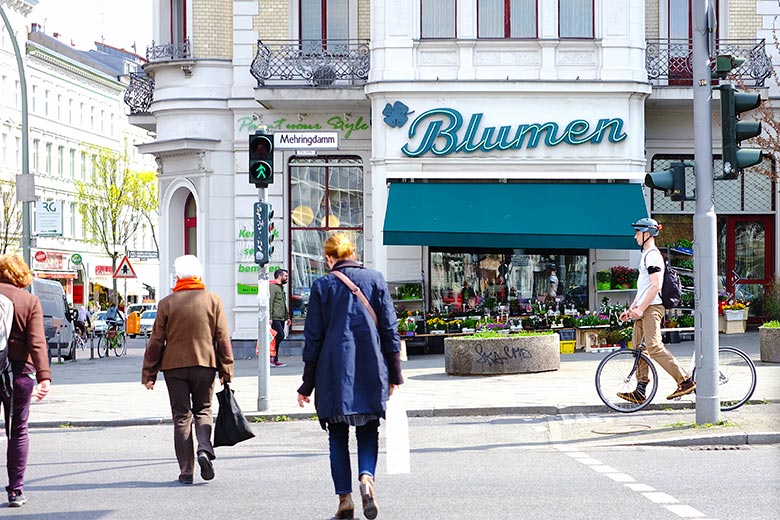
Walking along Bergmannstraße we inevitably end up at the Marheineke Markthalle, an indoor market comparable to Markthalle IX in nature, but a much smaller version. In fact, some merchants are represented at both Markthallen.
As usual, there’s a weekend Flohmarkt, flee market, just next to the Markthalle. People here are selling all sorts of things like clothes, books, and home accessories. Just across the street is a lovely wine bar, called Not Only Riesling. Here you can buy wine by the bottle, or drink it there in the rather spacious indoor tasting room. The server can recommend wines for you to try, and a glass wasn’t more than 6 EUR for what we had. (To clarify, we didn’t go during our daytime stroll, not that I wouldn’t have liked to…)

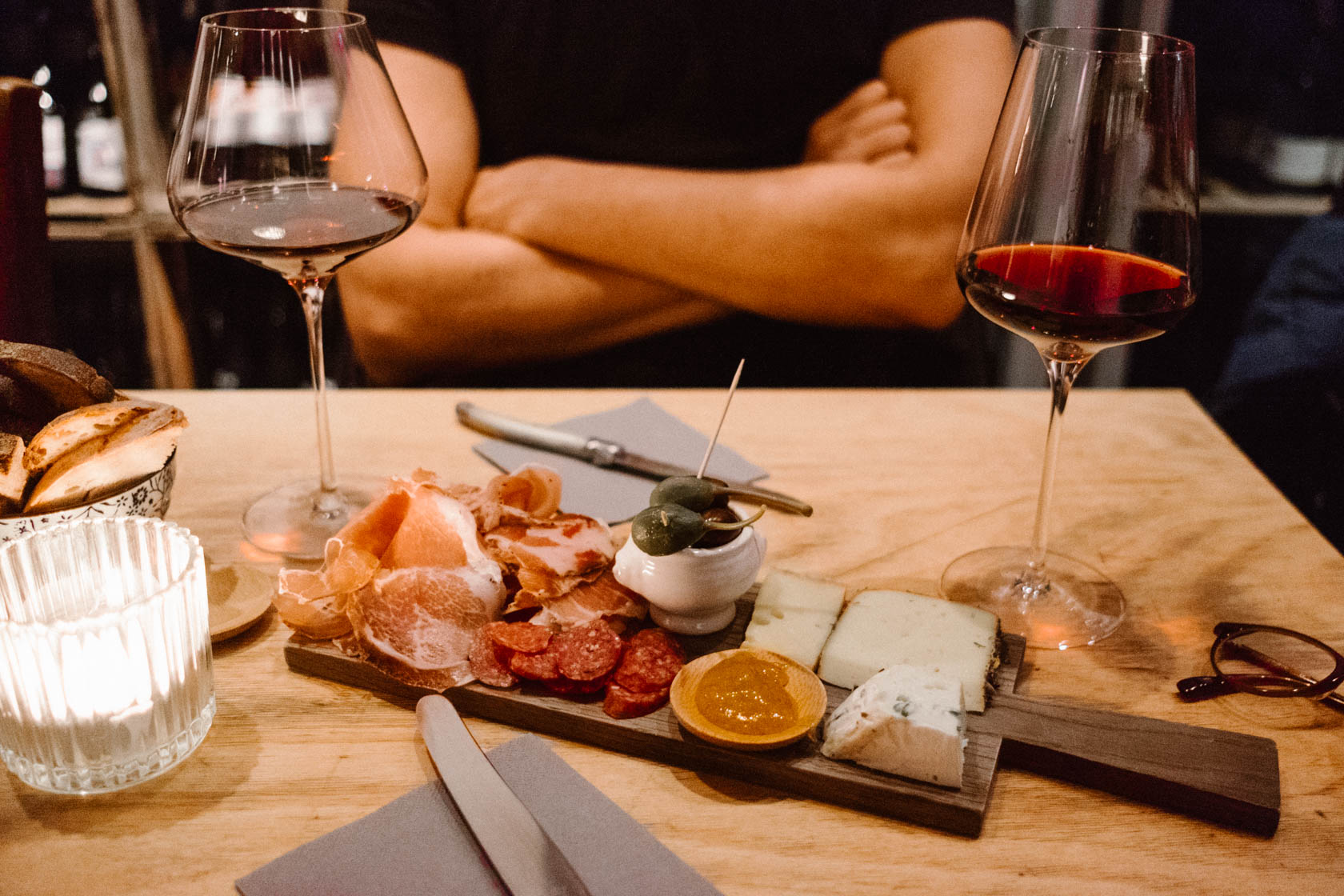
Immediately visible is the Passionskirche, another one of the lovely brick-and-turquioise churches in the area. This final sight concludes our walk, and from here on it’s time to go home.
On the way we stoped by our local Blumenladen, flower shop, for a bouquet. Nothing screams Spring like fresh flowers in the home! Ours even came with a fake bird in a nest 😂
